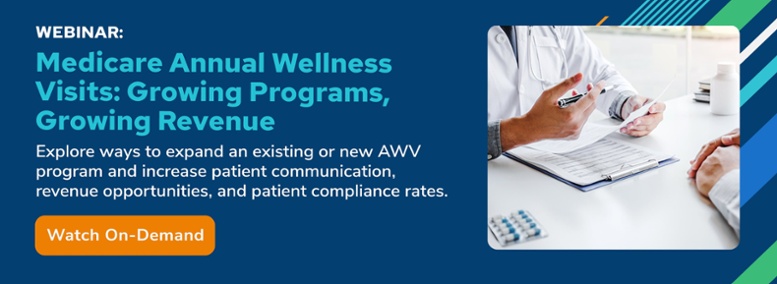Thea Blystone, PharmD, is a clinical pharmacist at Meadville (Pa.) Medical Center, which implemented a remote patient monitoring (RPM) program supported by the Prevounce platform. Dr. Blystone was one of the leaders of this project. She spoke with Prevounce about a range of topics, including why she's such a strong proponent of RPM, results of the program, why RPM is a perfect fit for rural organizations, and the evolving role of pharmacists in rural hospitals. Note: Responses have been edited slightly for clarity.
Q: How does Meadville use the Prevounce platform?
Dr. Thea Blystone: Prevounce's platform helps Meadville and me leverage the data collected via RPM devices used by patients into notifications and alerts to support care for this patient population. The platform organizes the information in a seamless manner, allowing for ease of use and transferring of data into electronic health records for the care team to review and monitor patients between visits. This helps us provide exceptional service and care.
Q: What was your motivation to push your hospital toward the implementation of remote patient monitoring?
TB: We operate in small town America. For our hospital to remain a small, hometown, independent hospital and not get bought up by a bigger conglomerate, patient satisfaction and diverse revenue streams are extremely important. Being able to offer RPM services helps on both fronts. It leads to greater patient engagement and satisfaction and helps the physician offices capture the quality measures they need for value-based healthcare, all while building for us another stream of revenue.
Q: Why did your hospital decide to launch a remote patient monitoring program?
TB: We were looking for service lines that could produce big returns on small investments. Running an RPM program checked those boxes. The program also enhanced our population health management program that's already underway and performing community outreach.
Q: What have been your remote patient monitoring program results thus far?
TB: Following a slower start than we expected because of COVID-19, the program is showing great engagement and impactful interventions. We have had many great interactions with patients. For example, one patient we enrolled in the program was not taking their medications correctly due to a fall and their weight was impacted. We provided education to the patient and their caregiver about the risks that missing those medications could have on their heart and circulation. This likely saved the patient from an emergency room visit and possible congestive heart failure readmission.
Q: Why is remote patient monitoring a good fit for rural hospitals?
TB: RPM services are a great fit for rural hospitals. RPM gives the providers "eyes" on the patients between office visits and greatly helps to personalize medication regimens for each patient through the ongoing collection of data, especially when programs make the decision to leverage pharmacists as members of their care team.
Q: What role can pharmacists play in supporting and growing a remote patient monitoring program?
TB: A pharmacist is uniquely positioned as a medication expert and one of the most trusted medical professions. Pharmacists typically possess strong communication skills as these are focused on heavily in school and training, with a particularly big emphasis on how to relate to and talk with patients. These communication skills position pharmacists to be a great assist with health literacy and patient education, which is exactly why pharmacists should augment any RPM program. Pharmacists will find that the conversations they have with patients through RPM and chronic care management (CCM) are similar to those they would have with patients at the pharmacy counter.
Q: What advice would you provide to rural hospitals considering adding remote patient monitoring?
TB: RPM services will further augment the telehealth programs that our patients have grown to appreciate throughout the pandemic. Telehealth is here to stay. RPM helps collect the data to make more informed outpatient decisions. We know the value of inpatient monitoring. RPM is similar, just with the monitoring occurring in the comforts of a patient's home. RPM services also really help patients better understand their health. Through education and leveraging programs such as RPM, hopefully we can improve health literacy and better engage patients in their healthcare journey by making them more informed advocates of health.
When starting an RPM program from the ground up, I would first consider where these services would make the biggest impact for your organization. Are you looking to reduce readmissions and emergency department utilization or perhaps support an existing program like a heart failure clinic? The health issues and experiences that RPM is best positioned to support usually incur costs to the organization based on insurance compliance rates and reimbursement changes due to metrics. RPM can drive a return on investment for a hospital both to its bottom line but also for those quality metrics that can help a hospital secure the higher reimbursement rates which usually target those patients in the greatest need for high-quality care.
Q: Where do you think remote patient monitoring in rural hospitals is headed?
TB: Up, up, up. It's here to stay because of all the ways that an RPM program impacts healthcare: patient engagement, return on investment, health literacy, health advocacy — the list goes on.
Q: Where do you think the role of pharmacists in rural hospitals is headed?
TB: Pharmacists in rural hospitals will always have a role in patient care, whether dispensing medications, performing inpatient clinical rounds, providing emergency department support, or becoming involved in surgery centers, but there is much more a pharmacist can do once you consider the ambulatory care setting of the physician offices within rural hospital settings. There is so much education and support that a pharmacist can provide to that team of doctors, nurses, and support staff because pharmacists possess such a different and valuable skill set. Pharmacists can do a world of good for patients and healthcare teams when they are empowered to go beyond just pharmacy dispensing.


